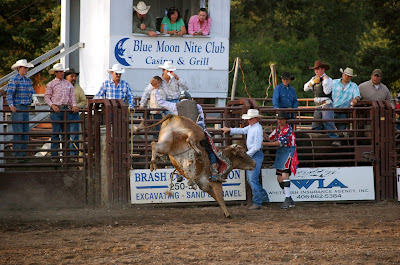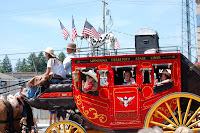
View of condos and homes on Big Mountain, and Whitefish Lake below, as seen from Danny On Trail.
Whitefish, according to the stuff I read, seems the best example of a town controlling its own destiny. Once a big railroad town (and still a daily stop for Amtrak, as well as home to huge train yards), Whitefish seems the kind of place which could have just fallen off the map. Except that its enterprising, surrounded by huge mountains, adjacent to a lake and river, and less than an hour’s drive to Glacier National Park. So they fashioned themselves anew and built a ski resort and became a tourism destination. And I am so happy they did.
Whitefish is gorgeous. Driving up on 93 from Kalispell, the cutout slopes of Big Mountain are front and center. 93 dumps you straight into downtown, and if you don’t know enough to turn, it takes you to the train station (where incidentally, a deer was just chowing down in the grass, in the middle of the day, and no one seemed to think anything of it). Downtown, there are several blocks filled with stores, saloons, a brewery, restaurants, a diner (made from a Caboose), ice cream shoppes, and people everywhere. They do theatre, and I love the library (where I am right now). And then, a little farther from downtown is City Beach-- you guessed it, a public beach on the lake. There are bike trails, and everyone-- and I mean everyone-- rides their bike seemingly everywhere.
I am staying about fifteen minutes outside of town, up on Big Mountain. It’s a steep drive uphill (where some people are stupid enough to bike up for fun), and then as close to the lift as you can get is my condo. My balcony looks out over the valley, and at night the lights twinkle like little land stars. From upstairs, on the other side of my condo, I have a view of the slopes, and I love watching mountain bikers dart across the trails from way up high.
The gondola goes up all day, and music streams from the restaurant and bar across the street. There is a popular (and somewhat long and steep) hiking trail that goes up and around the mountain to the summit. And soon, when I have five full hours to hike, I will do the whole thing. For now, I have only made it about halfway up(ok, maybe just a third-- it’s 2500 feet of elevation gain!). There are other condos and residences built into the mountain side, with a string of roads connecting everything, which I like to walk on early in the morning and after dinner. (The sun doesn’t begin to set until well after 9pm, giving decent light outside until close to 10pm. It’s lovely being so far north again.)
I am eager for the Farmer’s Market downtown tonight, and still looking for good “me-level” trails to ride my bike on. I don’t like riding in traffic, so I am awaiting a good recommendation. On Thursdays, they have mountain bike races on the mountain, and soon, I am going swimming (I just bought goggles).
I rode a rather boring ride yesterday morning that was too short. Then, later in the afternoon, hoping to get some better exercise, I decided it was a good idea to bike downhill for a while. The problem with going down is it happens fast, and it doesn’t occur to you just how much you will have to ride back up. About 5 minutes and a quarter mile into the ride back up, I just kept thinking this was like that stupid half marathon I ran when I was a kid. What was I thinking? I made it all the way back up, but I had to stop three times and rest my sad legs and lungs, then at home I collapsed with a Big Sky Moose Drool beer.
The weather is gorgeous, and I’d say it’s quiet, but it never is. I hear things I would never hear in other places. There is always water moving everywhere, and the wind. And animals, and occasionally the sounds of far away people or music, but I don’t mind. Those are the kinds of things I want to hear. And typically, I am content to sit outside and watch it all, or the nothing, as it comes.
PHOTOS FROM THE DANNY ON TRAIL, On Big Mountain

huckleberries, I think...

the mountains that surround me, in layers





















































